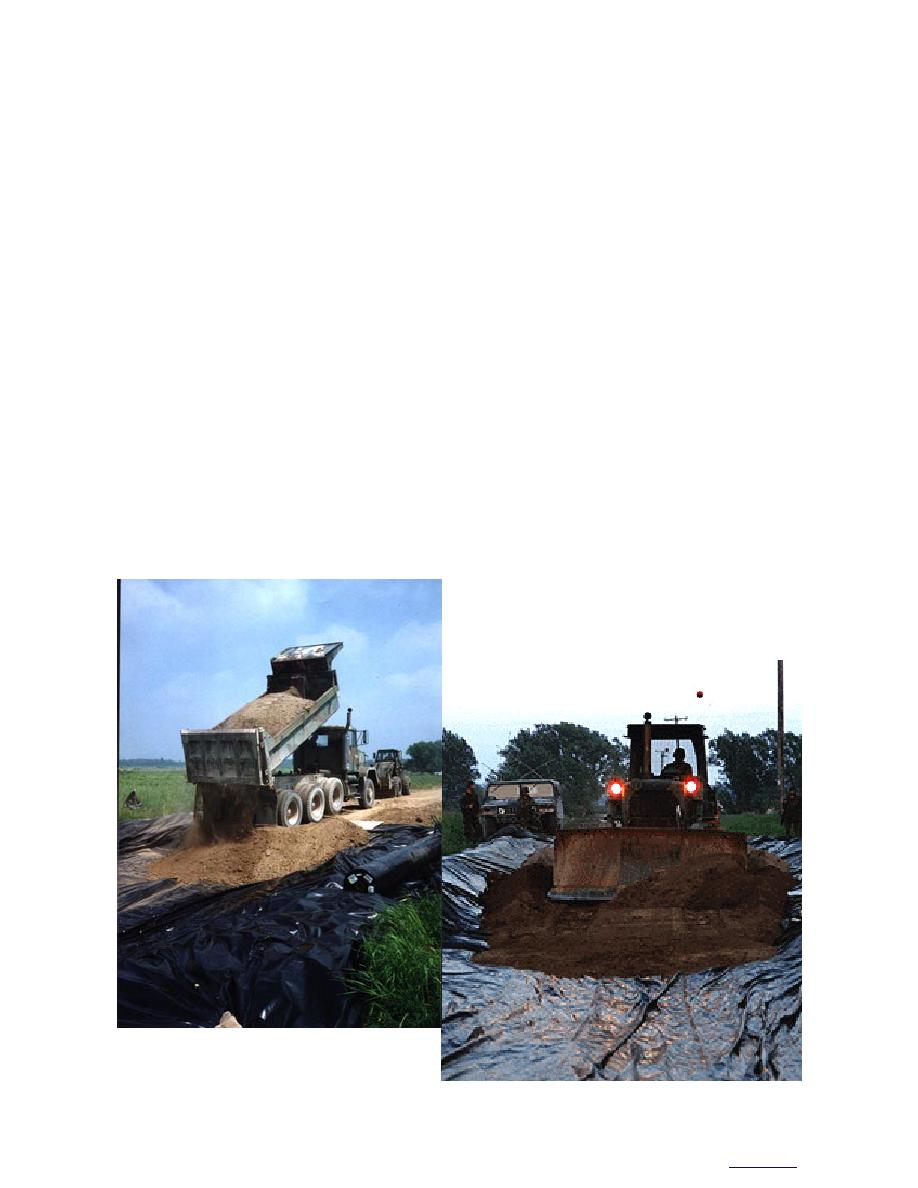
MESL test
yard bucket loader were used to excavate the sec-
Two MESLs and a control section were con-
tions to a depth of 457 mm (18 in.). The material
structed. MESL 1 used lime-treated clay as the en-
was loosened by using the ripper teeth on the D-7.
capsulated soil, and MESL 2 used untreated clay
The loosened material was then removed using
as the encapsulated soil. MESL 1 used two differ-
the pans and transported for use at a different
ent membranes on top and bottom (Fig. 3). One
construction site.
The D-7 and the bucket loader were used to
reason for doing this was to determine whether
smooth the excavation. The area was then cleared
there were any difficulties seaming two mem-
of any sharp material by hand and the lower
branes together. To protect the upper membrane,
membranes were placed in the excavation. At the
one layer of geotextile was placed on one side of
locations where a seam was needed, the mem-
the road and two layers of geotextile were placed
branes were cleaned with isopropyl alcohol and
on the other side.
wiped dry. Tape was applied and the membranes
MESL 2 was constructed similarly to MESL 1
were joined. A small hand-held roller was used to
except the top and bottom membranes did not
smooth the seam and ensure a watertight seal.
have a seam in the middle. The amount of geotex-
The ends of the membrane were folded back to
tile protection was increased to two layers on
the edge of the excavation and covered with geo-
each side and an additional layer in the middle.
textile fabric and plywood to prevent damage
The control section was similar to MESL 2 except no
from the trucks dumping the fill material.
membranes were used. The MESLs were approx-
The fill material was transported to the site in
imately 457 mm (18 in.) deep and 6.7 m (22 ft)
20-ton dump trucks. Because vehicle traffic
wide.
would damage the membranes, the trucks had to
back to the edge of the excavation to dump the fill
MESL construction
soil (Fig. 4) and a dozer pushed the material over
The MESL construction was conducted at
the membrane (Fig. 5). A loaded 20-ton dump
Poagland Road. A D-7 bulldozer, pans, and a 2.5-
Figure 4. Placing fill soil inside the MESL.
Figure 5. Using a D-7 to spread soil in the MESL.
7



 Previous Page
Previous Page
